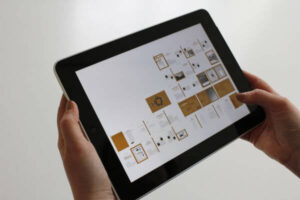When it comes to web design, typography plays a vital role in shaping the overall user experience. The selection, arrangement, and styling of typefaces can significantly impact how users perceive and interact with a website. In this article, we will delve into the multifaceted role of typography in web design and explore its influence on readability, user engagement, branding, and aesthetics.
- Typography and Readability
1.1 Font Selection
Choosing the right typeface is crucial for ensuring readability. Sans-serif fonts like Arial and Helvetica are commonly used for online content due to their clean and legible appearance on screens. Serif fonts, such as Times New Roman and Georgia, are often employed for long-form text, as the serifs aid in guiding the reader’s eyes along the lines. Selecting a font that complements the website’s content and target audience is essential for optimal readability.
1.2 Font Size and Line Length
The size of the font and the length of the lines impact how users consume and understand the text. A font size that is too small can strain the reader’s eyes, while excessively long lines can make it difficult to follow the content. Striking a balance between legibility and aesthetics is crucial. Implementing responsive typography techniques, where the font size adjusts based on the screen size, ensures readability across various devices.
- User Engagement and Interaction
2.1 Hierarchy and Visual Hierarchy
Typography helps establish a visual hierarchy, guiding users through the content and highlighting key information. By utilizing different font sizes, weights, and styles, designers can direct the user’s attention and emphasize important elements. Clear hierarchies aid users in quickly understanding the structure and significance of the content, enhancing their engagement and overall experience.
2.2 Typography and User Interface (UI) Elements
Typography extends beyond the body text and headings; it also influences the design of UI elements such as buttons, forms, and navigation menus. Well-designed and visually appealing typography enhances the user interface, making it intuitive and easy to navigate. Consistency in font choices and styling across these elements helps users establish a mental model of the website, improving their overall interaction and satisfaction.
- Typography and Branding
3.1 Establishing Brand Identity
Typography plays a vital role in establishing a brand’s visual identity. The choice of fonts conveys specific brand attributes, such as professionalism, elegance, or playfulness. Companies like Coca-Cola, with its distinctive script font, and Apple, known for its sleek and minimalist typography, have successfully used typography to reinforce their brand identities. Consistency in font usage across various touchpoints, including the website, marketing materials, and logo, helps reinforce brand recognition.
3.2 Custom Typography
Custom typography, including bespoke typefaces or modifications to existing ones, offers a unique opportunity for brands to differentiate themselves. Custom fonts can align with a brand’s personality, values, and target audience, further strengthening its identity. However, it is essential to balance creativity with legibility to ensure that custom typography remains user-friendly and accessible.
- Aesthetics and Visual Appeal
4.1 Typography and Visual Design
Typography is a powerful visual design element that can enhance the aesthetics of a website. The careful combination of font families, weights, sizes, and colors can create visually pleasing compositions. Contrast between fonts and sufficient white space can make the text stand out and improve legibility. Harmonious typography choices contribute to the overall visual appeal of the website, capturing users’ attention and leaving a positive impression.
4.2 Web Fonts and Responsive Design
Web fonts have revolutionized typography in web design by providing a wide range of fonts that are specifically optimized for screen display. With the help of web font services like Google Fonts and Typekit, designers can easilyincorporate diverse and unique typefaces into their web designs. Responsive design techniques ensure that the chosen web fonts adapt seamlessly to different screen sizes and resolutions, maintaining a consistent and visually appealing typography experience for users.
- Conclusion
Typography is a powerful and multifaceted element in web design, influencing readability, user engagement, branding, and aesthetics. Carefully selecting appropriate fonts, optimizing font size and line length, and establishing a visual hierarchy contribute to improved readability and user experience. Typography also plays a significant role in establishing a brand’s identity, reinforcing recognition, and differentiation. Aesthetically pleasing typography enhances the visual appeal of a website, capturing users’ attention and leaving a positive impression.
Web designers should consider typography as a fundamental aspect of their design process. By understanding the impact of typography on various aspects of web design, designers can create compelling and engaging user experiences. Whether it’s selecting appropriate fonts, establishing visual hierarchies, or aligning typography with branding goals, the thoughtful use of typography elevates the overall quality and effectiveness of a website.
In summary, typography is more than just selecting fonts and arranging text—it is a powerful tool that shapes the user experience, communicates brand identity, and enhances the visual appeal of a website. By harnessing the potential of typography, web designers can create captivating and effective designs that resonate with users and leave a lasting impact.




